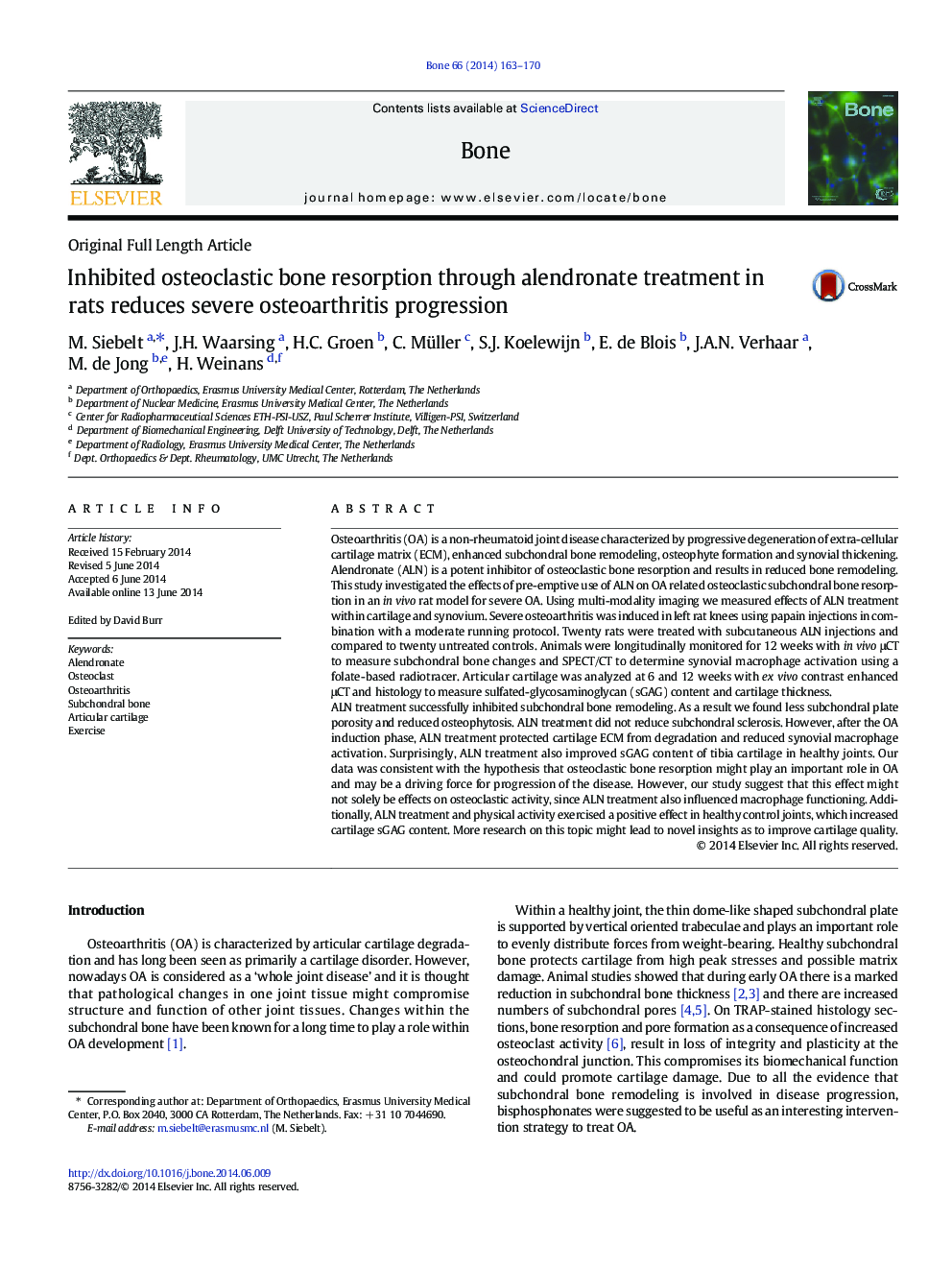| Article ID | Journal | Published Year | Pages | File Type |
|---|---|---|---|---|
| 5890199 | Bone | 2014 | 8 Pages |
Abstract
ALN treatment successfully inhibited subchondral bone remodeling. As a result we found less subchondral plate porosity and reduced osteophytosis. ALN treatment did not reduce subchondral sclerosis. However, after the OA induction phase, ALN treatment protected cartilage ECM from degradation and reduced synovial macrophage activation. Surprisingly, ALN treatment also improved sGAG content of tibia cartilage in healthy joints. Our data was consistent with the hypothesis that osteoclastic bone resorption might play an important role in OA and may be a driving force for progression of the disease. However, our study suggest that this effect might not solely be effects on osteoclastic activity, since ALN treatment also influenced macrophage functioning. Additionally, ALN treatment and physical activity exercised a positive effect in healthy control joints, which increased cartilage sGAG content. More research on this topic might lead to novel insights as to improve cartilage quality.
Related Topics
Life Sciences
Biochemistry, Genetics and Molecular Biology
Developmental Biology
Authors
M. Siebelt, J.H. Waarsing, H.C. Groen, C. Müller, S.J. Koelewijn, E. de Blois, J.A.N. Verhaar, M. de Jong, H. Weinans,
